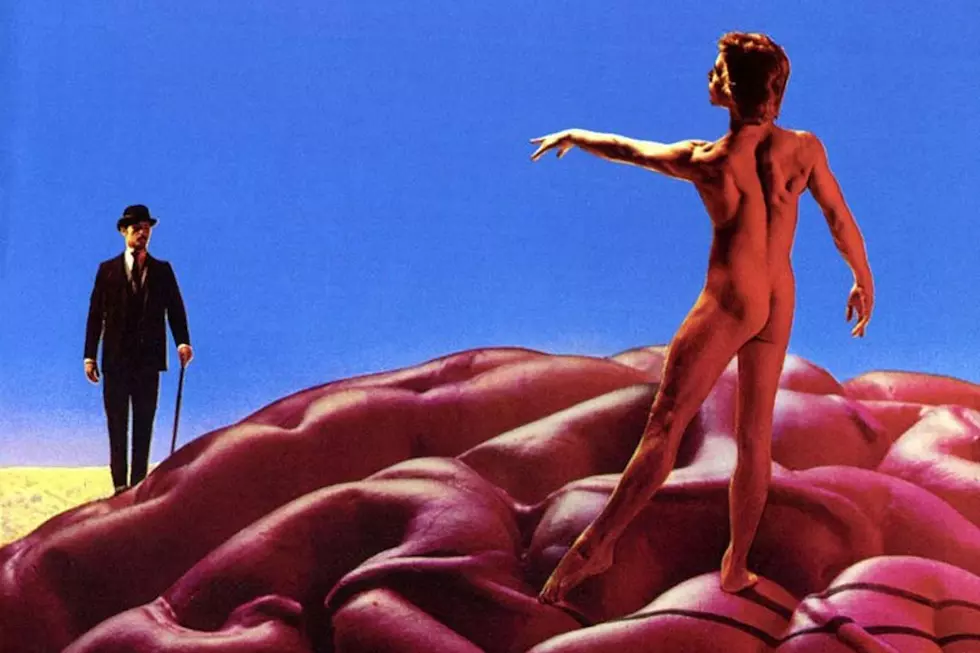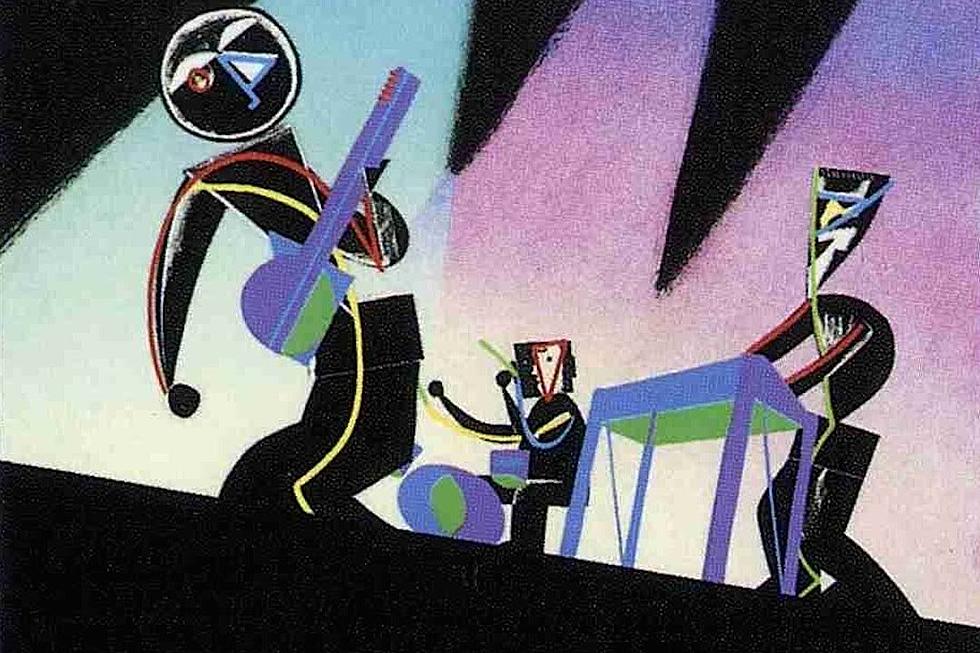
Rush’s ‘Hemispheres': How Philosophy, Surrealism Inspired Cover
There were a lot of naked male buttocks on prog-rock album covers at the tail end of the '70s — namely, Yes' Going for the One and Rush's Hemispheres. But it was all a coincidence.
"I never made the connection," Hugh Syme, Rush's art director since 1975, tells UCR.
Instead, his vivid design for the power trio's proggiest record evolved from intimate conversations with drummer and lyricist Neil Peart — their regular routine by that point.
"A lot of [the discussion] was on the phone," he says, noting that Rush recorded their instrumental tracks at Rockfield Studios in Wales. "It was one of the more long-distance endeavors. Normally, if we were in Toronto, we'd hang out and talk about the cover. In the early stages, [bassist] Geddy [Lee] and I would also get together to talk. And then eventually Geddy and [guitarist] Alex [Lifeson] got too busy with the music. Neil was still in lyric-concept mode, so that became the default alliance, which worked well for 40-some years. But on that album, there was a lot of discussion about Dionysus and Apollo and the left-brain, right-brain [theory]. We have a calculating side of our nature, and we have a free-spirited [side]."
Syme was inspired by the suit-clad man on Belgian surrealist Rene Magritte's 1946 painting The Son of Man, and that figure folded perfectly into their conceptual framework. "[Peart] was a huge Magritte fan, too," he adds. "We discussed the [stoicism] of that man."
The final image features a distinguished fellow — played by Syme's longtime friend Bobby King — standing rigidly on one side of a brain, with a nude, elegant man on the other.
"We had this guy in a leotard, which just didn't suit rock 'n' roll," Syme says of the latter model, who'd been studying at the Toronto Ballet School. "But it was also a big gamble to say, 'Will anybody embrace a bare-assed guy on a cover?' It was a nod to the free spirit unshackled by clothing and that sort of thing. That became the device for creating contrast."
Syme had previously employed one of the Hemispheres models for a nude Rush pose — ironically, though, it wasn't the ballet student.
"Bobby was also the willing bare-assed character for the Starman [on 2112]," Syme says. "He came back to be the Magritte character. He showed up again in the wings of Exit … Stage Left, and he was also the prime mover — no pun intended — for the Moving Pictures cover. I made good use of his good will … and his cheap modeling fees."
Rush Albums Ranked
More From Ultimate Classic Rock









